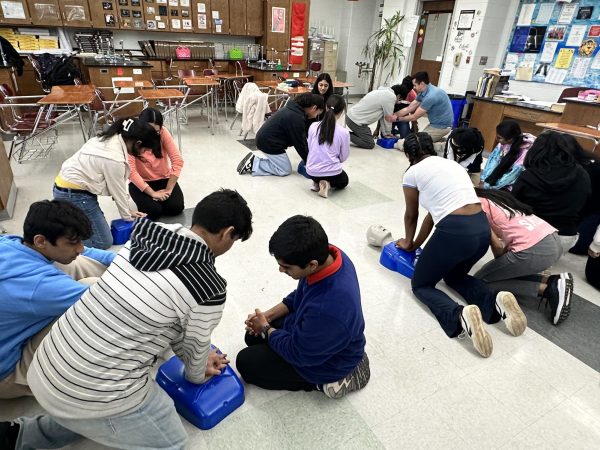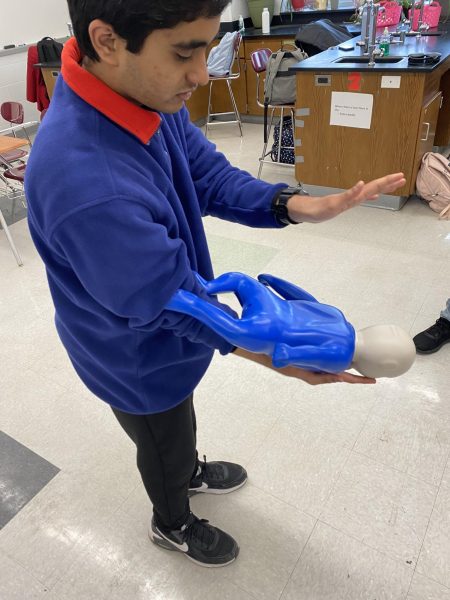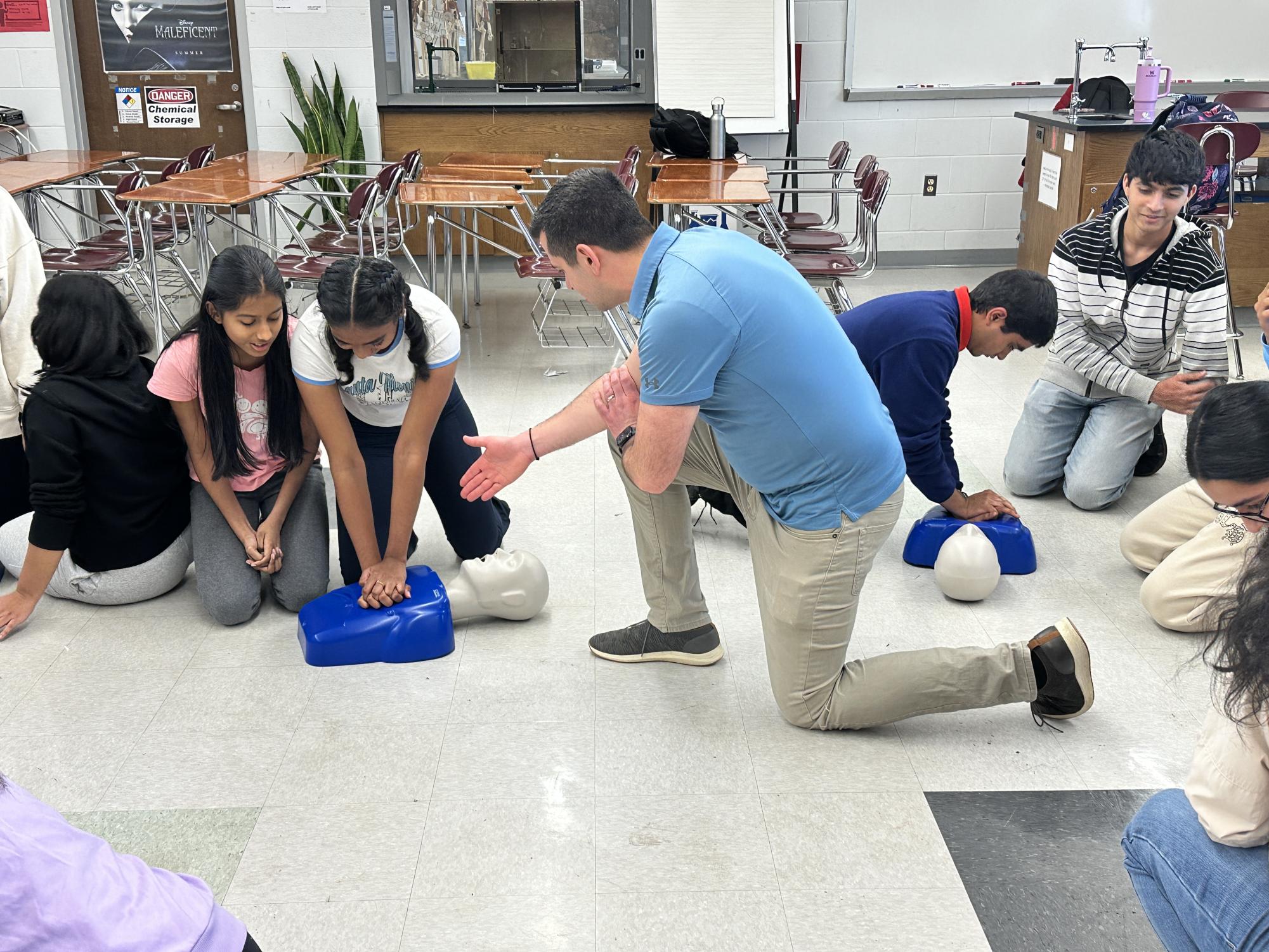When faced with an emergency, every second matters. That’s exactly what students at Edison High School learned this week during a recent Basic Life Support (BLS) class, where they practiced live-saving techniques for medical emergencies.
The training was offered by Biology teacher Mr. Stanley Stellakis. During the course, students were trained in the basic skills that are needed to respond to medical emergencies. Some of these techniques included proper usage of AEDs (a device that delivers electric shocks), chest compressions, and the differences in approaches to adult and pediatric emergencies. The class was not just limited to teaching students theoretical knowledge; it also gave them a chance to put their skills into action by practicing CPR on dummies.

Apart from being a biology teacher at EHS, Stelakis brought broad knowledge and experience. As a part-time Emergency Medical Technician (EMT) for over 15 years, Stellakis has served with multiple rescue squads, further enhancing the learning environment with his practical knowledge related to the course.
Stellakis stressed how CPR does not guarantee survival but can increase a person’s chances to live when done correctly and promptly. Throughout the class, he focused on balancing engagement and seriousness to ensure students understood the importance of BLS. He incorporated humor to create a comfortable and enjoyable learning environment but emphasized critical moments to highlight the importance of emergency response.
Additionally, Stellakis provided students with helpful tips, such as using body weight to pto properly administer CPR. This stands true even if the rescuer accidentally breaks the ribs of the person going through cardiac arrest, highlighting the importance of effective chest compressions over the fear of causing injury.

This is not the first time the BLS class has taken place at EHS. The program is part of an ongoing initiative led by Ms. Nehan Kumar, advisor of the Aspiring Medical Professional (AMP) Club, and Stellakis. Each year, they rotate between BLS and “Stop the Bleed,” a separate course focused on controlling severe bleeding.
Stelakis attributes his enthusiasm for conducting the courses to his passion for teaching.
“Teaching is one of the most rewarding aspects of being a seasoned EMT,” he said. “I am passionate about sharing my knowledge and experiences with others and helping them develop skills that can have a meaningful impact on our community.”
Through programs like these, Kumar and Stellakis continue equipping students with life-saving skills beyond the classroom. This workshop certified students to ensure effective responses to cardiac or choking emergencies, and thanks to the teachers’ dedication, students at EHS are slowly becoming more knowledgeable and confident in taking action during these life-threatening situations.
Incoming and other students who did not have the opportunity this year can look forward to participating in a class next year.
“It would be my pleasure to teach this class or any other training program the organization wishes to offer,” said Stellakis.



